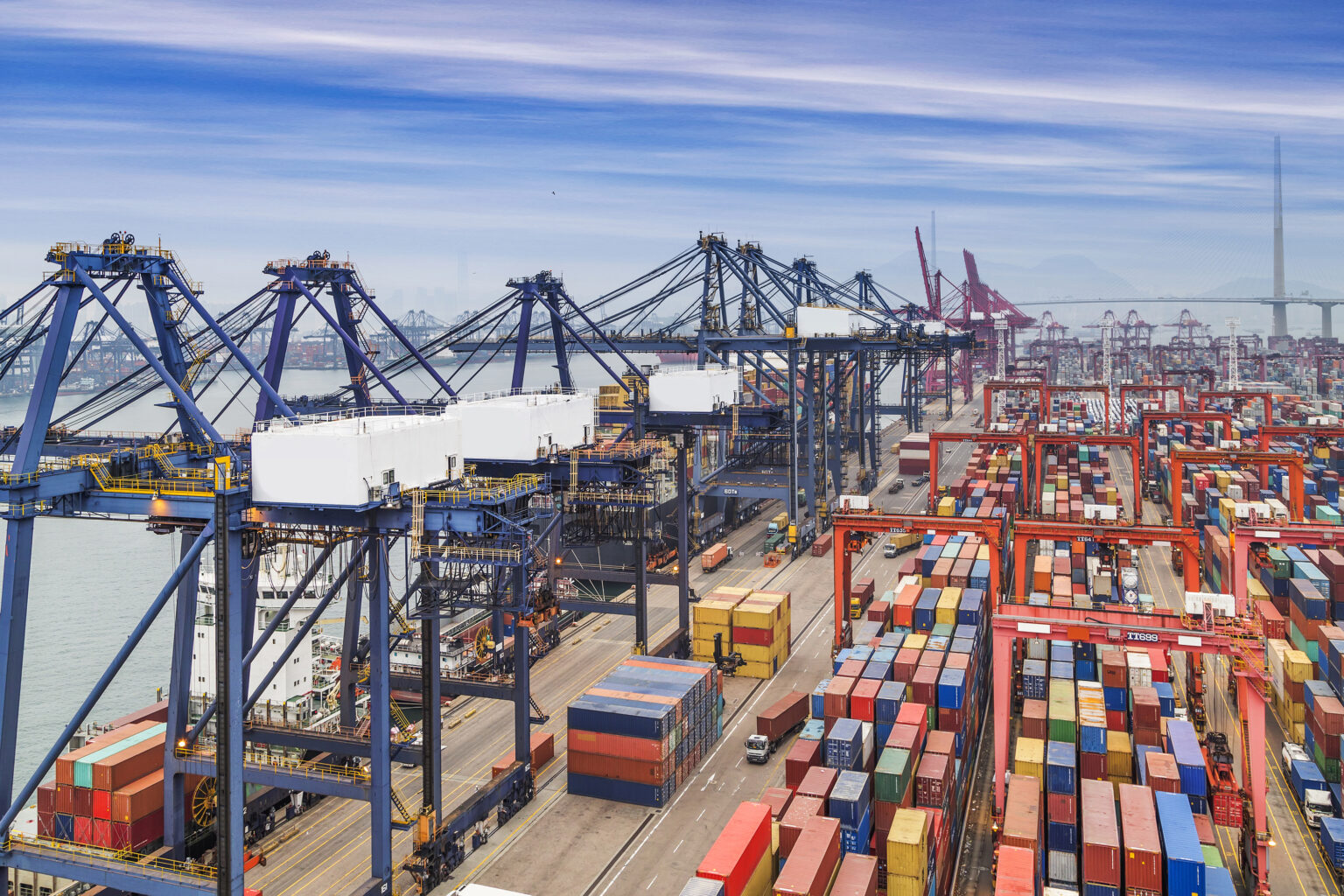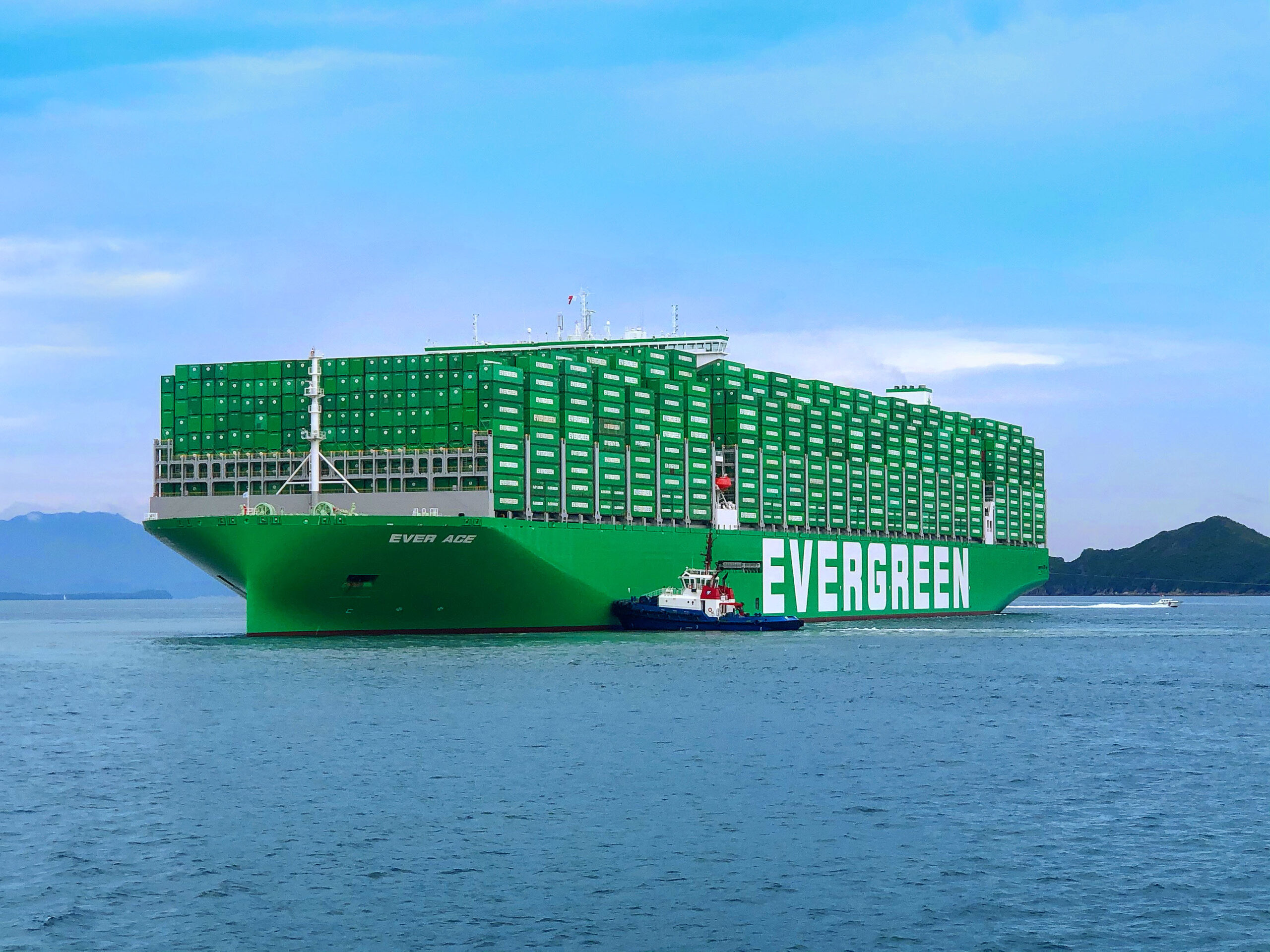Every year, Maritime-Insight arranges the Executive Meeting – a premiere event for business leaders in the maritime cluster. It has become a meeting place for key insight into the drivers of maritime business. It also addresses many of the challenges facing the maritime industry today. This year, I was invited to speak at the event about supply and demand in the container shipping industry. In this blog article, I will share some of that knowledge with you, focusing on 10 trends.
The container shipping industry in the rearview mirror shows an unpredictable world
Let’s go back a few years in history, to when the investment bank Lehman Brothers crashed in 2008 and the entire freight market collapsed, leaving us with idle vessels worldwide. Many carriers struggled with financial problems while some had stronger balance sheets. Those who had financial funding invested in building larger container vessels with more capacity and new engine technology. The benefits were spread costs as well as lower operating costs. This was the starting point for the arms race of the giant ships.
Overcapacity in the container segment keep rates low
Today, we experience the same tough market situation as back in 2008. Again, carriers are investing in building larger container vessels and the development has moved towards more cooperation and alliances between carriers for their own survival. At the end of 2015, the global idle container fleet had 330 vessels of a total capacity of 1, 36 million TEUs. It is sad to see all these vessels taken out of operation due to overcapacity – which is expected to keep rates low until there is a balance between supply and demand in the container segment.
10 global trends affecting the supply and demand in the container shipping industry
So what has happened? How come we are back at square one? The market situation for the container shipping industry is of course affected by the political climate worldwide. Here are 10 global trends that are influencing today’s market situation.
1.There is a lower demand for shipments to and from the Far East
China has had a rapid economic growth during the last decades and the country has been a tremendous force for increasing global trade. However the past year we could see the predicted growth actually diminish which has led to a lower demand for shipments to and from the Far East.
2.The overcapacity in the container segment does not match the financial cycles
Another important factor for the balance of supply and demand is timing. The giant ships of 14 000 TEUs, or more, have to fit into the financial cycles in order to provide a balance between supply and demand. This is a difficult task in a volatile market where prices move vigorously and unpredictably.
3.Fewer containers support the export demand to and from the Nordic countries
We know that crisis in the world affect the world trade. The crises in the Middle East, not to mention Ukraine, have led to Russian embargo and less import to Russia. This has affected the container shipping industry with decreased volumes through the gateways to Russia, via Finland and the Baltic countries. The result is fewer surplus containers in Finland and the Baltics that used to support the deficit of units of the east cost of Sweden supporting the export demand.
4.Growth from new regions increases the demand for containerized cargo
The future still shows a glimpse of light and potential for growth in the container industry. China will continue to be an important market, but we also see that growth comes from other regions with increased demand for containerized goods. For example Nigeria in Africa; today they have a population of 174 million people, and in 2050 they are expected to be 440 million people. Just imagine what great demands they will have for the world trade!
5.Industries adapt their cargo to the container shipping method
Another trend is that industries are adapting to containerisation. For example, the paper industry has adapted their cargo to the container shipping method by adjusting the size of paper rolls to fit the containers. The cargo is transported directly from the mill to the consignee, or even directly to the consumer, to make it more efficient and to reduce the risk of damages.
6.There is a shift from RoRo vessels to container vessels for shortsea transportation
RoRo vessels presently dominate short sea transportations within the SECA areas. But the intra-European market increases year by year and we can now see a clear trend where container vessels increase their intra Europe market share. The container vessels are more efficient and flexible compared to RoRo vessels, which today are relatively old and few new RoRo vessels are in order.
7.Increased commodities, malt, peat moss, fertilizers and timber
Generally, there is a world trade growth and some even predict that in the next decade 90 percent of the general global cargo will be shipped in containers. Commodities such as malt, peat moss, fertilizers and timber are now containerized to a greater extent. (Actually, if all timber in Sweden would be shipped in containers, the total Swedish container shipping market would grow by 100 percent, based on present figures!)
8.Capacity in ports grows faster than trade volumes
In some regions today, Sweden for instance, there are several seaports contributing to an imbalance between supply and demand. Carriers need to decide which ports to invest in, and at the same time, there is a risk with only a few big ports controlling the logistics flows. Single terminal operators that might only find interest in signing up with one or two alliances leads to no diversity in the industry, doesn’t benefit the customers/carriers or an open market competition?
9.Continued focus on sustainability and environment in the shipping industry
There is an ongoing trend in the shipping industry to focus on sustainability and environmental issues that affect the supply and demand. Carriers have to follow new regulations and adjust their ships accordingly. This affects the costs for carriers, while at the same time all parties of the logistics chain are keen to work with companies that offer sustainable transport solutions and good working conditions.
10.There is an increasing demand for customer focus and new technology
We are in the cradle of a technical revolution where everyone in the entire logistic chain – from producer to consignee – invests in, and develops, new systems to achieve higher efficiency. I believe in more transparency within the whole logistic chain, from producer to consignee, with ambition in the development of processes and to share common IT-systems. I would not be surprised if new container shipping alliances would take initiative for such cooperation.
The future of the container shipping industry
To sum up, there are many factors that play an important role for the balance between supply and demand in the container shipping industry. We face many challenges, but also possibilities, ahead of us. I am excited to continue to follow the global trends that influence the market situation and to find the best solutions for our customers in the future.
Hopefully, my blog post gave you some new insights in the global container shipping industry. What challenges and possibilities do you think the future holds? Please, share your thoughts in the comments below!
/Fredrik Hermansson, Greencarrier Liner Agency





